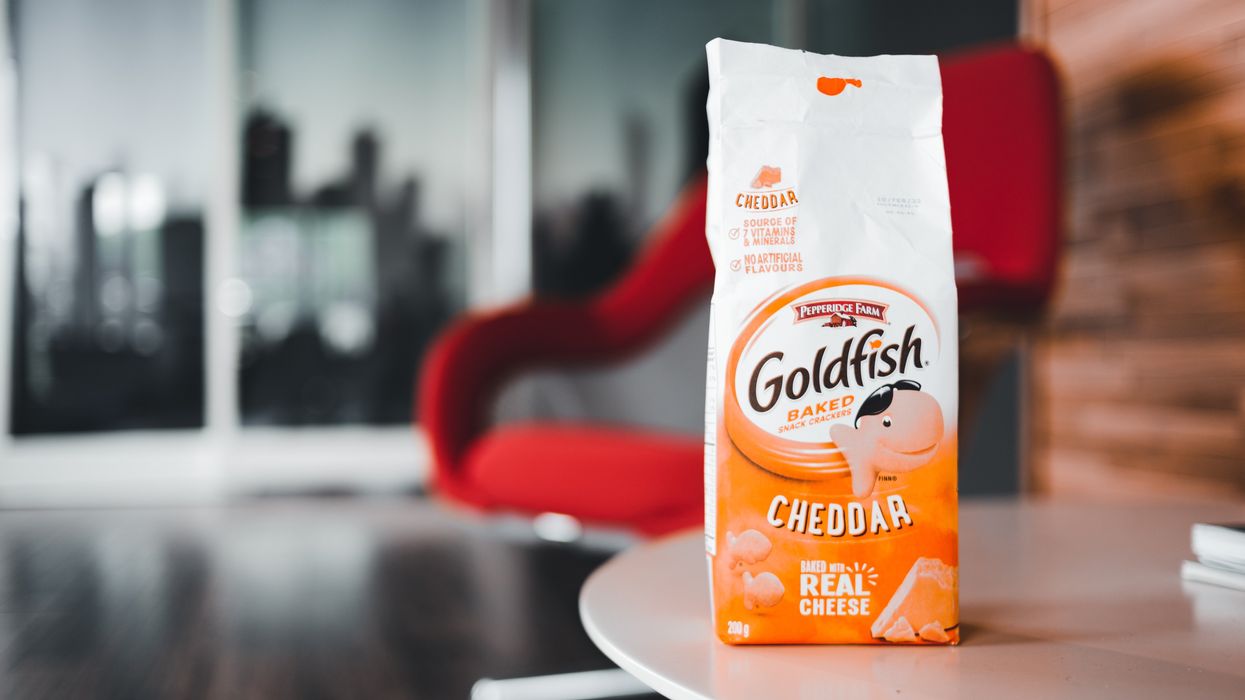Brand News
10 March 2023
Snacks are a star for Campbell Soup Company, led by Goldfish
The CPG aims to grow Goldfish to $1 billion in sales.

The CPG aims to grow Goldfish to $1 billion in sales.

The Campbell Soup Company's portfolio goes beyond the iconic red and white cans. In fact, it includes a number of recognizable snack brands like Goldfish, Lance and Kettle. After a revamp over the last several years, these snacks provided a big boost for the CPG company in its most recent quarter, which ended January 29.
Across the snacks category, revenue was up 15%, in-market consumption was up 17%, and the company’s power brands were growing at 20%.
CEO Mark Clouse called the performance of the category “a significant step in our journey.”
“In Q2, we had the strongest share growth in both cookie cracker and salty snacks among all major branded players, even more impressive as we are among the very few who compete in both of these critical categories,” Clouse told analysts on an earnings call, adding that margin improved, as well. “Although benefiting from pricing, we also drove favorable volume mix.”
Goldfish is the “star of the snack business,” and is approaching $1 billion in annual sales, Clouse said. It posted 21% consumption growth in the quarter.
“This was the second consecutive quarter of Goldfish being the largest driver of growth for the entire cracker category,” Clouse said. “And our strategy to expand our consumer target has been even more successful than expected with growth versus prior year in both buy rates and repeat rates among households without children about equal to households with children.”
While Goldfish is recognizable, Campbell is also taking steps to keep the brand fresh. In each of the last six quarters, it rolled out a limited edition-only launch to add new flavors and colors. Consumers are eating it up, as they are twice as likely to buy limited-edition offerings as the standard products.
The company is also innovating on the product itself. Kettle recently rolled out air fried potato chips that takes the home cooking phenomenon and applies it to mass manufacturing through a patented process.
Over the last two years, Campbell Soup has worked to revamp the portfolio to drive growth across all of the brands.
“It really is a combination of great marketing support, the right innovation and then a supply chain that's stepping up to meet that growing and expanding demand,” Clouse said.
The team behind snacks is also set to make moves. With the company closing offices in Norwalk, Connecticut and Charlotte, North Carolina, the snacks leadership team is relocating to the company’s headquarters in Camden, New Jersey.
Campbell Soup Company CEO Mark Clouse offered thoughts on messaging amid inflationary shifts in consumer behavior.
After months of elevated inflation and interest rate hikes that have the potential to cool demand, consumers are showing more signs of shifting behavior.
It’s showing up in retail sales data, but there’s also evidence in the observations of the brands responsible for grocery store staples.
The latest example came this week from Campbell Soup Company. CEO Mark Clouse told analysts that the consumer continues to be “resilient” despite continued price increases on food, but found that “consumers are beginning to feel that pressure” as time goes on.
This shows up in the categories they are buying. Overall, Clouse said Campbell sees a shift toward shelf-stable items, and away from more expensive prepared foods.
There is also change in when they make purchases. People are buying more at the beginning of the month. That’s because they are stretching paychecks as long as possible.
These shifts change how the company is communicating with consumers.
Clouse said the changes in behavior are an opportunity to “focus on value within our messaging without necessarily having to chase pricing all the way down.”
“No question that it's important that we protect affordability and that we make that relevant in the categories that we're in," Clouse said. "But I also think there's a lot of ways to frame value in different ways, right?”
A meal cooked with condensed soup may be cheaper than picking up a frozen item or ordering out. Consumers just need a reminder. Even within Campbell’s own portfolio, the company can elevate brands that have more value now, even if they may not always get the limelight.
The open question is whether the shift in behavior will begin to show up in the results of the companies that have raised prices. Campbell’s overall net sales grew 5% for the quarter ended April 30, while gross profit margins held steady around 30%. But the category-level results were more uneven. U.S. soup sales declined 11%, though the company said that was owed to comparisons with the quarter when supply chains reopened a year ago and expressed confidence that the category is seeing a longer-term resurgence as more people cook at home following the pandemic. Snacks, which includes Goldfish and Pepperidge Farm, were up 12% And while net sales increased overall, the amount of products people are buying is declining. Volumes were down 7%.
These are trends happening across the grocery store. Campbell is continuing to compete. It is leading with iconic brands, and a host of different ways to consume them. It is following that up with innovation that makes the products stand out. Then, it is driving home messaging that shows consumers how to fit the products into their lives, and even their tightening spending plans.
Campbell Soup is more than 150 years old, and has seen plenty of difficult economic environments. It is also a different business today, and will continue to evolve. At the end of the day, continued execution is what’s required.
“If it's good food, people are going to buy it, especially if it's a great value,” Clouse said.